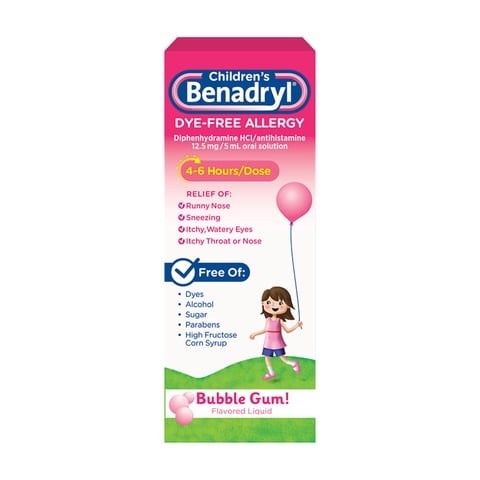Finding the Right Balance: Benadryl Dosing for Kids
As a parent, it’s heartbreaking to see your child suffering from allergies, especially when it interferes with their daily activities and overall well-being. To provide relief, many parents turn to Benadryl, a commonly used antihistamine. However, determining the appropriate Benadryl dosing for children can be a challenge. This article aims to shed light on the subject and provide guidance on ensuring safe and effective allergy relief for your little ones.
Here you go for the Benadryl Dosing Chart For Kids
Understanding Benadryl
Benadryl is the brand name for the drug diphenhydramine, which belongs to a class of medications called antihistamines. It is widely available over the counter and is used to relieve symptoms such as sneezing, itching, watery eyes, and runny nose associated with allergies or the common cold.
Factors to Consider for Safe Dosing
Age: The age of the child plays a crucial role in determining the appropriate Benadryl dosage. Different age groups require different dosing regimens to ensure safety and effectiveness. It is important to consult with a pediatrician or follow the guidelines on the packaging to determine the correct dosage for your child’s age.
Weight: Another important factor to consider is your child’s weight. Children of the same age can vary significantly in weight, and dosage is typically determined based on weight to provide an accurate and safe amount of medication. Always follow the weight-based dosing recommendations provided by healthcare professionals or on the packaging.
Symptoms and Severity: The severity of the allergic symptoms can also influence the dosage. Mild symptoms may require a lower dose, while more severe symptoms may warrant a higher dose. It’s essential to carefully evaluate your child’s symptoms and consult a healthcare professional for guidance on appropriate dosage.
General Guidelines for Benadryl Dosing
It’s important to note that the following guidelines are meant for general information purposes only. Always consult with a healthcare professional before administering any medication to your child.
Infants (6 to 11 months): Benadryl is generally not recommended for infants unless specifically prescribed by a doctor. It is essential to consult with a pediatrician to determine the appropriateness of using Benadryl for this age group.
Toddlers (1 to 2 years): For children aged 1 to 2 years, the recommended dosage is usually 1.25 ml (¼ teaspoon) of children’s Benadryl liquid, which typically contains 12.5 mg of diphenhydramine. It is best to consult with a healthcare professional to determine the correct dosage for your child.
Children (2 to 5 years): The recommended dosage for children aged 2 to 5 years is typically 2.5 ml (½ teaspoon) of children’s Benadryl liquid or one chewable tablet (12.5 mg) every 4 to 6 hours, as needed. Again, it is crucial to seek guidance from a healthcare professional for individualized dosing instructions.
Children (6 years and older): Children aged 6 years and older can generally follow the dosing instructions provided for adults, with the dosage ranging from 25 to 50 mg every 4 to 6 hours, as needed. However, it is still advisable to consult with a healthcare professional for appropriate dosing based on the child’s weight and symptoms.
Safety Precautions and Potential Side Effects
While Benadryl is generally safe when used correctly, it’s important to follow these safety precautions:
- Always read and follow the instructions on the packaging or as prescribed by a healthcare professional.
- Avoid exceeding the recommended dosage or frequency.
- Keep track of the time and amount of each dose to avoid accidental double dosing.
- Be aware of potential side effects, such as drowsiness or excitability, and monitor your child closely after administration.
- If your child experiences any adverse reactions or their symptoms worsen, seek medical attention immediately.
Conclusion
When it comes to Benadryl dosing for kids, finding the right balance between safety and efficacy is crucial. By considering factors such as age, weight, and symptom severity, you can work with a healthcare professional to determine the appropriate dosage for your child. Remember to always read the instructions carefully, monitor your child’s response to the medication, and seek medical advice when needed. With proper dosing and oversight, Benadryl can provide much-needed relief from allergy symptoms and help your child lead a more comfortable life.


Leave a Reply
You must be logged in to post a comment.